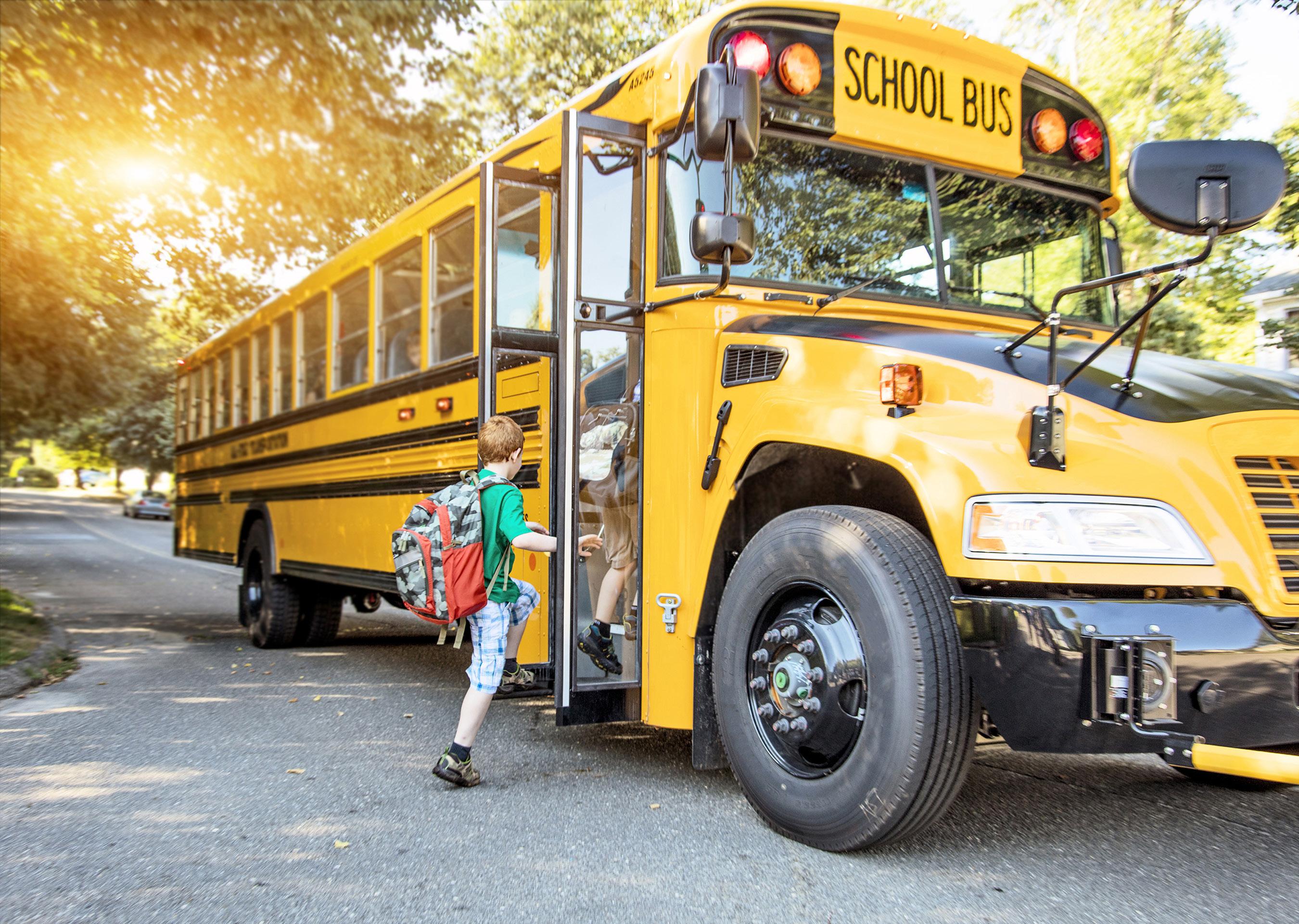Wednesday, July 16, 2025



Wednesday, July 16, 2025



(Metro)
If home is where the heart is, then the kitchen is wA new school year presents a wealth of opportunities for students. At the dawn of a new school year, students have a chance to further their academic careers, student-athletes may be given a shot at making a team or moving up to varsity, and extracurriculars provide a chance for personal growth outside the classroom.
Despite all that a new school year represents, students may need a little extra motivation to get excited about going back to campus once summer winds down. A relaxing and largely obligation-free summer vacation can be tough to give up, as can mornings without alarm clocks. Parents recognize that kids might not be enthusiastic about the return of early mornings and sessions in the classroom. In such instances, parents can try the following strategies to get kids excited about a new school year.
• Make the first day special. First days can be challenging regardless of a person’s age. Professionals with years of experience in their field still feel first-day jitters when they begin a
new job, so youngsters can be excused if what seems like a lack of excitement is really just nervousness about a new school year. Parents can calm those nerves by doing something to make the first day special. Skip the standard cereal and prepare a homecooked breakfast or let kids buy lunch at the school cafeteria instead of packing a PB&J in their lunchbox. A little something special on the first day can go a long way toward getting kids excited about going back to school.
• Emphasize new subjects. As children advance through school, they’re typically exposed to more engaging subjects or challenged in ways that helps them build on previous years’ work. Emphasizing new subjects or opportunities can increase kids’ excitement to get back in the school year swing of things. If a youngster likes playing an instrument, emphasize how the new school year is an opportunity to get better, play alongside other students and take a talent to new heights. If students are old enough to take subjects they’ve long been interested in, such as a foreign language, make a point to
emphasize how that opportunity has finally arrived.
• Create a school calendar. Schools typically make their yearly schedules available prior to the first day of school. Parents can peruse those schedules alongside their children and make a calendar noting special days. Mark down field trips, special events involving parents and students, school performances where kids get to act or sing on stage, and other notable moments during the school year. Kids are bound to grow more excited about a new year when they see a year’s worth of fun events marked down on a calendar.
• Host a late summer get-together with friends. A late-summer pool party or play date with various friends can remind youngsters that they’re about to see their friends every day. That might be enough to make young students jump out of bed on the first day of school. Students might be less than excited about the end of summer vacation and the dawn of a new school year. But there’s much parents can do to get kids excited about going back to school.

(Metro)
Students typically attend multiple schools over the course of their academic careers. Preschool, elementary school, middle school, and high school are all normal pitstops on students’ academic journeys.
Moving to a new school can pose a challenge for students. Whether they are beginning a new school at the start of a school year, or switching schools mid-year, the transition may be marked by a variety of emotions. The following tips can help students adjust to a new school.
• Discuss stress and uncertainty with kids. Parents can be honest with children and note that not every scenario is simple. Uncertainty is a part of life, and feelings that arise because of it can be acknowledged. Parents can demonstrate that it’s alright to feel stressed about the uncertainty of a new school and unsettled about changes that are coming. But ultimately everyone will work together as a family to help ease the transition.
• Familiarize oneself with the new school. Learning about and touring a new school can assuage a lot of the fears a student may have. School campus tours and opportunities to shadow students can help them feel more comfortable on the first day.
• Connect with other students. If possible, students should try to meet up with some of their potential peers. Some schools host meet-andgreet events where incoming students can hang out with others in a friendly environment. Seeing one or two familiar faces the first day of school can help students who are apprehensive.
• Focus on what can be controlled. One of the best ways that adults can help students feel more positive about a new school is by focusing their attention on what they can control, says Pearson. Gathering familiar supplies, setting up a schedule or enrolling in a favorite subject or extracurricular activity are some ways students can exert control to boost their confidence.
• Work with the teacher. Parents can meet with a student’s teacher or teachers about what they can do to foster a smooth transition, particularly if their child is coming into the school in the middle of the school year.
• Show an interest in the school. Parents should be active participants in their children’s educations. That means attending school functions that celebrate students and joining parent-teacher organizations. Asking about new courses or extracurricular activities also can help students who may begin to mirror the enthusiasm their parents are showing.
Adjusting to a new school takes some time, but it is not an insurmountable task.
Every student takes something unique from their high school experience, and many eventually look back fondly on the years spent in the hallowed halls of their alma maters. High school might be the last step before learning a trade career or serve as four years of preparation for college. Either way, it is important to get good grades.
Continually challenging oneself with coursework can help students get the most out of their academic careers. General level classes are often taken freshman year and honors classes sophomore year. Students may then decide to enroll in advanced placement or dual enrollment classes as an upperclassman. As students continue to push themselves and classes get harder, they may have to revise their approach in order to excel. These guidelines can help students continue to be successful.
• Establish a solid foundation. The first step towards success in any class is gaining a solid understanding of the basics, says Stemly Tutoring. If there are gaps in foundational knowledge, assignments and tests can be particularly difficult as the coursework becomes harder. Routinely reviewing previous material and ensuring that the fundamental concepts are mastered is essential.
• Practice active learning. Active learning involves engaging with the material in a way that goes beyond passively reading texts. Ideas include formulating questions, quizzing classmates, explaining the material to others as a teacher would, and writing down key words and topics so they are more likely to be remembered.
• Focus on time management. In high school, five or more classes run concurrently during the year. Assignments may have similar due dates, and tests and quizzes may come more frequently. Students will need to master an organizational system and time management strategy that works for them. Students can utilize a day planner as a useful organizational tool. Breaking down long-term assignments into smaller pieces that are easier to manage also can be useful. Smartphone notifications can alert to due dates.
• Seek help when needed. Students

shouldn’t hesitate to ask for help from peers, academic coaches, tutors, or their teachers. Study groups or partnerships with classmates also may be fruitful. Students should not wait until they are falling behind to seek help, as that can make it much more challenging to catch up.
• Study regularly. Reviewing material frequently and reinforcing knowledge is a smart strategy. Creating visual aids like diagrams or maps can help students understand a subject more fully. Again, this carries back to mastering the fundamentals. Looking back on previous lessons may
help students with current ones.
• Don’t forget to find balance and prioritize self-care. Academics are important, but so is mastering a balance between schoolwork and other activities. Without balance, a student may experience burnout, stress and additional symptoms that can impede students’ ability to do well in school.
High school coursework gets more difficult as the years pass and students challenge themselves. Certain strategies can help students navigate increasingly challenging coursework.

(Metro)
No two children are the same, but many youngsters share a number of similarities. Few young children enjoy going to bed on time, and many can’t resist a good trampoline. Kids also have a reputation for being picky eaters, which can be challenging for parents tasked with picking and preparing school lunches. When dining at home, parents know which foods their kids eat and which they push around their plates in the hopes they won’t have to consume them. School lunch is a different scenario altogether, as parents are not around to ensure their youngsters eat a full and nutritious meal. Kids who are picky eaters may not eat any lunch at all. Parents who want to ensure their children get the nutrition they need to do well in school can consider the following school lunch ideas.
• Make-your-own sandwich: Kids may be more likely to eat a full lunch if they get to put it together themselves. Parents can put all the
elements of a tasty sandwich into youngsters’ lunch boxes, but let kids assemble the meal themselves. Sandwiches are not necessarily the healthiest midday meal, but they are much more nutritious when parents pack whole grain bread, tomatoes, lettuce, and low-sodium deli meat in students’ lunch boxes. If a do-it-yourself sandwich is a nonstarter, consider a DIY taco lunch complete with whole grain tortillas.
• Burrito bowl: A burrito bowl with kid-friendly yet nutritious ingredients is another great school lunch option. Red beans are a good source of fiber and the Harvard Medical School notes all beans are rich in potassium. Fiber is filling, so a burrito bowl that includes fiber-rich ingredients, including red beans but also quinoa or brown rice, can help students avoid lateday hunger pangs that can compromise how they feel and perform in the classroom. Burrito bowls are so tasty that kids may not even realize Mom and Dad have snuck some healthy foods like vegetables into their midday meal.
• Parfait: Parfait has all the looks of a tasty dessert without the pitfalls of ice cream and other treats. The nutritional value of parfait depends on the ingredients Mom and Dad choose to include. Protein-rich Greek yogurt paired with some fruit and granola makes for a filling and tasty meal that’s also loaded with vitamins, minerals and fiber. An insulated and airtight lunch box packed with ice packs can ensure the parfait is still cool come lunchtime.
• Pasta salad: Kids tend to be especially fond of pasta, and parents can use that affinity to their advantage when planning school lunches. A whole-wheat pasta salad with some cherry tomatoes and diced broccoli makes for a nutrient-rich lunch that kids can enjoy. If broccoli figures to raise youngsters’ ire, consider a nutritious substitute, such as shaved cucumber or zucchini.
School lunches can be nutritious and still make kids excited to eat their midday meal away from home.

Students are bullied every day. Bullying can happen anywhere, but it is prevalent in school environments. Bullying is often under-reported because children and young adults may be scared of the consequences of outing their bullies.
In 2014, the Centers for Disease Control and Prevention and the U.S. Department of Education released the first federal definition of bullying. The definition encompassed three elements: 1. Unwanted aggressive behavior; 2. Observed or perceived power imbalance; and 3. Repetition or high likelihood of repetition of bullying behaviors.
DoSomething.org says around 20 percent of students between the ages of 12 and 18 have been bullied during the school year, and more than 150,000 teens have skipped school because of bullying. The Pew Research Center reports that 35 percent of U.S. parents with children younger than 18 say they are extremely or very worried that their children might be bullied at some point. Those fears may be warranted, as the Monique Burr Foundation for Children reports a child is bullied on a playground every seven minutes and between 50 and 77 percent of students report having been bullied.
Bullying victims may feel they’re in a helpless situation, but students can do their part to curtail bullying and report offenders. Here are some actions students can take, courtesy of StopBullying.org.
• Treat others with respect. Students should stop and think before they do or say anything to another person that has the potential to be hurtful. Making it a point to be nicer to others and recognizing that everyone is different is a start.
• Apologize for past behaviors. Those who think they may have bullied someone in the past should own up to it and apologize with meaning.
• Talk to an adult. Students can talk to an adult they trust if they are being bullied or have witnessed another person being bullied. Telling someone can help a person feel less alone. This person may help develop a plan to stop the bullying.
• Stay in groups of friends. Most bullying happens when adults aren’t around or when a person is isolated. Having a strong group of friends can deter bullying.
• Be aware of cyberbullying. Much bullying does not take place in person. Cyberbullying is prevalent and happens online or through text messages. Students should always think about
what they post, and be aware that something said “in private” might be forwarded. Students should not share anything that could hurt or embarrass another person.
• Contact authorities, if applicable. According to the Anti-Bullying Alliance, most bullying incidents are not crimes, but there are certain types that are illegal and should be reported to the police. Bullying that involves violence or assault; theft; harassment and intimidation over a period of time, including calling someone names or threatening them; and/or perpetrating abusive phone calls, emails or texts, should be reported.
• Lock down privacy settings. Together with their parents, students should safeguard their devices by adjusting privacy settings. These settings control who sees what is posted on social media. If a person is bullying another through text or social media, the person being harassed can document what is said by taking screenshots and then block that person from contact.
• Let others know they aren’t alone. Students can support others who are being bullied by letting them know they are not alone.
Bullying continues to be a concern in schools. Students can be proactive partners in stopping bullying at school and after hours.

(Metro)
Education is vital for young people to reach their full potential and enjoy success in adulthood. Students’ academic journeys begin as early as preschool and continue for decades. While students ultimately earn degrees or professional certifications in their own names, their academic journeys are often a team effort that includes the support of their parents. Parental involvement in school can pay significant dividends for students. In 2019, the American Psychological Association reviewed more than 400 studies examining parental involvement in school. That review found that students whose parents were involved in their children’s schooling showed greater academic achievement, school engagement and motivation compared to youngsters with parents who were not involved. That payoff compels millions of parents to get involved in their children’s schooling, and the following are a handful of ways to do just that.
• Start the year off right. Parental involvement in children’s schooling can begin before a new school year gets under way. Orientation events designed to acclimate students to new schools can help calm youngsters’ nerves
when they’re beginning kindergarten, elementary school, middle school, or high school. Transferring to a new school due to a family relocation or another variable can be difficult for students, and parents can make that transition a little easier by attending orientation events before the first day of classes. Backto-school nighs held a week or two into the school year also present a great chance for parents to start the year off right.
• Actively communicate with children’s teachers. Parents can contact teachers at the start of a new school year to identify the best way to communicate. Some schools utilize apps to facilitate communication with parents. Some teachers may prefer communicating via email, phone calls or even text messages. Parents should not hesitate or be afraid to reach out to teachers about their children’s needs.
• Do your part at home, too. Parental involvement in children’s education can extend to the home as well. Parents can emphasize the importance of education in conversations with their children and offer to help with homework when children seem to need some assistance. Parents also can ask about assignments and tests, enthusiastically en-
gage in projects designed to involve students’ families, and provide a stable, distraction-free home environment where kids can focus on their schoolwork.
• Volunteer with parental organizations. Parent teacher associations/organizations are always in need of members to help to organize special events and volunteer at school functions. Parents can join groups such as a PTA or PTO to get more involved in campus life. If joining such groups is not possible, parents can let it be known that they would like to volunteer for events throughout the school year.
• Ask children about their day. One of the simplest ways parents can be more involved in children’s schooling is to ask them about their day when they arrive home. Ask children what they did in class, and which parts of their day they found most, or even least, enjoyable. When parents express an interest in what kids are doing at school, that may compel kids to be more interested in their coursework.
Children are the ultimate beneficiaries when parents get involved in their youngsters’ education, and there’s no shortage of ways for moms and dads to engage at school.
Many Americans are fortunate to have dental coverage for their entire working life, through employer-provided benefits. When those benefits end with retirement, paying dental bills out-of-pocket can come as a shock, leading people to put off or even go without care.
Simply put — without dental insurance, there may be an important gap in your healthcare coverage.
When you’re comparing plans ...
Look for coverage that helps pay for major services. Some plans may limit the number of procedures — or pay for preventive care only.
Look for coverage with no deductibles. Some plans may require you to pay hundreds out of pocket before benefits are paid.
Shop for coverage with no annual maximum on cash benefits. Some plans have annual maximums of $1,000.
Medicare doesn’t pay for dental care.1
That’s right. As good as Medicare is, it was never meant to cover everything. That means if you want protection, you need to purchase individual insurance.
Early detection can prevent small problems from becoming expensive ones.
The best way to prevent large dental bills is preventive care. The American Dental Association recommends checkups twice a year.
1 “Medicare & You,” Centers for Medicare & Medicaid Services, 2025. 2 “Aging changes in teeth and gums”, medlineplus.gov, 4/17/2022. 3 American Dental
Previous dental work can wear out.
Even if you’ve had quality dental work in the past, you shouldn’t take your dental health for granted. In fact, your odds of having a dental problem only go up as you age.2
Treatment is expensive — especially the services people over 50 often need.
Consider these national average costs of treatment ... $222 for a checkup ... $190 for a filling ... $1,213 for a crown.3 Unexpected bills like this can be a real burden, especially if you’re on a fixed income.
“Absolutely love”
“I absolutely love my dental insurance. My dental office files the claims, leaving me with very little balance to pay.”
Dorothy P., TN



